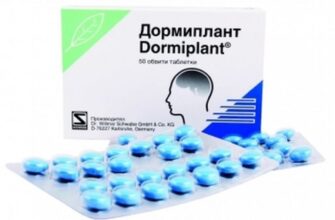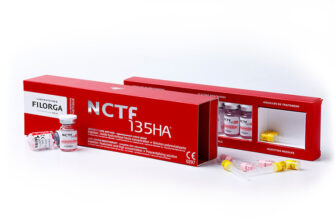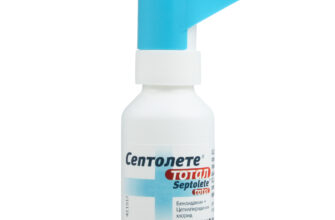Review of the best according to the editorial board. On the selection criteria. This material is subjective and does not constitute advertising and does not serve as a purchase guide. Before buying, you need to consult with a specialist.
One of the most unpleasant sudden conditions that, despite the absolute safety for life and health, can occur in a person is a panic attack. This is a sudden, strong anxiety, internal tension, a sharp and overwhelming fear of death, which is accompanied by a 'vegetative storm', for example, reddening of the face, palpitations and other symptoms.
Doctors who diagnose panic attacks have identified more than 13 vivid symptoms, and if a person has 4 or more characteristic signs during an attack, then a panic attack can be diagnosed. However, there are also so-called minor forms, when there are only two or three symptoms. And why did you need such a complex diagnostic technique, reminiscent of a questionnaire or sociological research? Simply because the symptoms of a panic attack are so many and all 'vague'. For some it is indescribable horror, for others it is unusual physical sensations that are difficult to describe in words, for example, 'mobilization of the whole body'. Sometimes it happens that the feeling of fear does not arise at all, this is the so-called 'headless panic' or 'panic without panic'.
These sudden episodes are quite often accompanied by severe anxiety, and can be repeated if you get into any similar situation, for example, when stuck in an elevator. In some cases, however, panic disorder can occur in other situations and under different circumstances.
Quite often, in addition to purely physical symptoms such as chest pain, dizziness, feeling short of breath or palpitations, there are also symptoms that psychiatrists deal with. These are signs such as feelings of absolute unreality, detachment from reality, the illusory nature of everything that happens, that is, a sense of derealization and sometimes – depersonalization. Depersonalization is a complex feeling: 'I am not me'. Quite often, the patient is afraid of going crazy during a panic attack, and this is a higher level of fear than just an animal fear of death.
Already after the first attack, quite often there is a secondary fear of getting into this situation again, or fear of a relapse of a panic attack. As a result, a rigid style of patient behavior is formed, and it is aimed at avoiding similar situations and subsequent attacks, and at any cost. Why does panic attack occur, and how often does it occur?
- Etiology and risk factors
- The physiological 'base' of a panic attack
- Panic Attack or Panic Disorder?
- What do patients complain about at the doctor?
- Treatment
- An overview of drugs for panic attacks
- Antidepressants: SSRIs and tricyclics
- Venlafaxine (Velaxin, Velafax, Venlaxor)
- Advantages and disadvantages
- Duloxetine (Simbalta)
- Advantages and disadvantages
- Fluoxetine (Prozac)
- Advantages and disadvantages
- Sertraline (Zoloft, Asentra, Serenata, Surlift, Stimuloton)
- Advantages and disadvantages
- Tricyclic: Imipramine (Melipramine)
- Advantages and disadvantages
- Benzodiazepines
- Alprazolam (Zolomax, Helex)
- Advantages and disadvantages
- Non-benzodiazepine anxiolytics
- Hydroxyzine (Atarax)
- Advantages and disadvantages
- Atypical antipsychotics
- Risperidone (Speridan, Rispolept, Risset, Torendo)
- Advantages and disadvantages
- Instead of a conclusion
Etiology and risk factors
It turned out that panic attacks often occur in families with an increased hereditary level of anxiety, when there is a history of severe neurosis, when a person was subjected to violence, both physical and sexual, in childhood.
In general, any stress, from a serious illness, divorce and the death of a loved one to the death of a pet, can play the role of a trigger or trigger factor in the formation of a panic attack.
Physiologically and biochemically, it is not completely clear exactly which structures of the central nervous system and disorders in which mediator environments are ultimately realized by a panic attack. However, it turned out that there is a violation in GABA-ergic transmission, as well as changes in the metabolism of serotonin.
Most often, panic attacks are common in women, on average, the latter is more common than in men. Their prevalence in the population is, on average, from 2 to 5%. The age at which panic attacks occur is from 20 to 40 years. This is the heyday of hormonal life and saturation, and it becomes clear why: after all, the role of hormones – catecholamines, adrenaline is key in the realization of 'vegetative storms'. The debut of a panic attack that occurs for the first time in old age or during menopause in women is extremely rare and can be considered clinical casuistry. What is the typical clinical picture of a deployed panic attack, and where did this reaction of the body come from?
The physiological 'base' of a panic attack
A typical panic attack can be characterized as extreme anxiety, when a person is deaf to the voice of reason and logical arguments, he is under the influence of very strong fears. This is the fear of death or loss of consciousness, the fear of going crazy, and these fears are abundantly seasoned with vegetative symptoms, expressed through sympathoadrenal crises. These are tachycardia and chest pain, nausea and increased sweating, facial flushing and dizziness, a feeling of heat or even cold chills with tremors and tremors.
The special insidiousness of a panic attack is that it is usually impossible to recognize it in advance, and, unlike a migraine attack, a panic attack does not have any precursors. It begins suddenly, just like a major seizure, and is associated with an adrenaline rush. Therefore, the old doctors are right who equate a panic attack with a vegetative-vascular sympathoadrenal crisis.
We can say that in patients with vegetative vascular dystonia and sympathoadrenal crises in the presence of fear of death and severe anxiety during a crisis, a diagnosis of panic attack can be made. The sympathoadrenal crisis is nothing more than an ancient, but untimely and inappropriate reaction in this situation, which is aimed at the complete and fastest possible mobilization of all the body's defenses. As a result, in nature, a person, or any other living creature, realizes this reaction through immediate flight, or an attack – any way to protect his own life as soon as possible.
It is for this that the blood flow is redistributed extremely quickly, the blood begins to quickly supply skeletal muscles and the brain, and flows from the skin and internal organs. There is a deepening and quickening of breathing, an increase in the supply of blood with oxygen, and the work of the heart increases. And all this, not finding an outlet in immediate muscle activity, without 'discharge', leads to the development of unpleasant symptoms. If all patients who suddenly had a panic attack could rush to run and run several tens of meters, then this would be the best treatment, since all physiological reactions aimed at muscle activity would be realized in a normal way.
Panic Attack or Panic Disorder?
The attack begins suddenly, and usually it lasts for several minutes, and then everything ends safely. And here it is very important for the doctor to figure out whether the patient has an isolated panic attack, or panic disorder has already formed. How are these two states different? But what:
in the case of isolated panic attacks, the patient does not form a fear of waiting for a subsequent attack in the light intervals between them.
That is, some unpleasant state arises, it was, and it ended. He can explain this by external factors, for example, stuffiness, a quarrel with the boss at work, and this explanation is quite acceptable. Hence – the freedom of the future, and therefore there is no expectation of a new panic attack, the formation of tension and anxiety. This is the most favorable option.
But in the event that a person believes that external factors have nothing to do with it, and this case is a feature of his body, then (especially in the presence of suspiciousness, suggestibility and a hypochondriacal, melancholic temperament) he begins to form the fear of waiting for a subsequent attack, and the next a step is the formation of ritual behavior.
The person very strongly avoids the situation in which the previous panic attack occurred. If it happened in a store or a shopping center, then he tries not to visit crowded places. If he became ill on the bus, then he begins to avoid using transport, and if a person became ill in the elevator, then from now on he only walks. By the way, from avoiding the situation of repetition is very close to OCD, that is, to obsessive-compulsive disorder, or obsessive-compulsive disorder. There is already an overvalued, obsessive thought of non-falling and non-repetition, and it is a stone's throw from it to the ritual of obsessive actions.
What do patients complain about at the doctor?
It should be remembered that the doctor does not see a panic picture 'on the go', the patient talks to him after everything that happened, as they say, 'to a clear head'. Depending on from which system the greatest number of complaints arose, the patient can visit a cardiologist, a neurologist, and even a gastroenterologist. So, if he has a large number of cardiac signs, such as pain in the heart and chest, fear of death, irregular heartbeat, then he will most likely come to a cardiologist.
If tremors, numbness in the extremities or sudden weakness, some clouding of consciousness, semi-fainting and dizziness remain in his memory, then such a patient will be seen by a neurologist, since he will first of all suspect that he has something like epilepsy, a brain tumor, or suddenly developing 'temporary' stroke.
At the same time, the emerging fear of death, panic itself and pronounced anxiety by the patient is fully justified, and people say that this is just a 'normal reaction to a possible serious illness', heart attack or stroke, and in its place everyone would be frightened.
At the same time, specialist doctors, even if the diagnosis of panic attack or panic disorder becomes completely clear, sometimes it is extremely difficult to convince the patient that there is no real threat to their life, there is no tumor, stroke and other hypothetical serious diseases, and all this is elementary. panic. These conclusions of the doctor discourage, and even insult the patient, who is used to considering himself a victim of an unknown, not yet found, but very serious illness.
Patients believe so strongly in their disease that they are able to express distrust to several doctors at once, and tend to form a more severe addiction for themselves. In some cases, it comes to pathological psychoproduction with the formation of delusional disorder, but this requires serious treatment by a psychiatrist.
It goes without saying that the diagnosis of a panic attack must take into account the presence or absence of psychiatric diseases, for example, schizophrenia, organic mental disorder, and other conditions, including the use of various psychoactive drugs. Moreover, without a full-fledged psychiatric examination, it is impossible to collect complete information and prescribe treatment for a patient with severe panic disorder.
Diagnosing panic attack and panic disorder is a tough job, as it is imperative to make sure that all the various symptoms, from shortness of breath, rapid pulse, and ending with dizziness and lightheadedness, are not a sign of any medical illness. And this means that without a full examination, without an ECG, without Holter monitoring, without spirography, sometimes – bicycle ergometry cannot be done. Although an experienced doctor often already at first glance it is clear that we are talking about a panic attack, it is necessary mechanically, routinely, with the help of various analyzes and instrumental research methods, to clearly prove in the medical history or outpatient card that there are no serious diseases, for example thyrotoxicosis, or attacks of ischemic heart disease. In the same way, you need to make sure that the patient has no psychiatric pathology, no post-traumatic stress disorder, a specific phobia, for example, social, and so on. How is panic disorder treated?
Treatment
Of course, non-drug treatment for panic disorder is the best option. After all, panic is still based on, albeit perverse and untimely, but still a normal life-saving response. Good, for example, are psychotherapeutic influence, individual and group psychotherapy. There are alternative and harsh methods, when the patient is 'driven' over and over again into this situation until his conditioned reflex connection breaks down and he is free from the influence of this situation.
An example can be given with spirits. If, for example, a man loved a woman who used a relatively rare perfume, then if he accidentally encounters this scent, he can remember everything in a second, and sometimes it is so amazing that a person can freeze in place under the influence of surging memories. But if he is constantly given this scent again and again, if his relatives and colleagues will use it, then after a while it will cease to influence memories. This is what provoking methods of treating panic attacks are based on.
In some cases, drug support is necessary, for example, monotherapy with a single drug is indicated, but the best, nevertheless, should be recognized as a combination of psychotherapy and medication. There are many therapeutic strategies that are more effective, but we will not dwell on them. Our goal is to describe some of the drugs that are used to combat panic disorder.
It should be said right away that we will not talk about emergency care, that is, stopping the panic attack itself. This is a separate topic, and in some cases, the patient just needs to breathe into the balloon. When an increased amount of carbon dioxide is accumulated there, many symptoms associated with an excess of oxygen in the blood go away without medication. In some cases, a glass of water and an open window, a few drops of Corvalol are enough, and sometimes an ambulance and the introduction of Relanium are required.
Our task is to tell you about drugs that are aimed at stabilizing the state, and preventing subsequent attacks and relapses. All of them are applied in courses, in the 'light gaps' between panic attacks. This review is compiled from so-called 'real' drugs for the treatment of panic attacks, and virtually all of these drugs are prescription drugs. Many of them, for example, atypical antipsychotics, can only be prescribed by a psychiatrist. Many of them are used to treat depression, anxiety, and even some major mental illnesses such as schizophrenia or bipolar disorder.
This review will not include OTC food supplements, traditional therapies, herbal preparations that have become traditional for the Runet, and drugs that have filled the entire Runet like Corvalol, peony tincture and other means.
As usual, the INN, or international nonproprietary name, is indicated at the beginning, then the first released or original drug product, if available, and then a list of commercial copies, or generics that are much less expensive than the original drug. The prices for medicines are relevant for the winter of 2020 for pharmacies of all forms of ownership in the territory of the Russian Federation.
The list of drugs was compiled without the purpose of advertising or anti-advertising of any medium, and the name of the drugs, as well as the sequence of presentation, is dictated exclusively by national recommendations for the treatment of panic conditions and panic attacks, and information on drugs, indications and contraindications is taken from the official instructions.
An overview of drugs for panic attacks
| Nomination | a place | Name of product | price |
| Antidepressants: SSRIs and tricyclics | 1 | Venlafaxine (Velaxin, Velafax, Venlaxor) | 228 r |
| 2 | Duloxetine (Simbalta) | 886 r | |
| 3 | Fluoxetine (Prozac) | 89 RUB | |
| 4 | Sertraline (Zoloft, Asentra, Serenata, Surlift, Stimuloton) | 480 RUB | |
| 5 | Tricyclic: Imipramine (Melipramine) | 357 r | |
| Benzodiazepines | 1 | Alprazolam (Zolomax, Helex) | RUB 499 |
| Non-benzodiazepine anxiolytics | 1 | Hydroxyzine (Atarax) | RUB 311 |
| Atypical antipsychotics | 1 | Risperidone (Speridan, Rispolept, Risset, Torendo) | 199 RUB |
Antidepressants: SSRIs and tricyclics
Antidepressants of various groups are among the main and most effective agents for the long-term treatment of panic disorder. But the choice of this or that drug is carried out by the doctor, taking into account additional criteria. For example, it depends on the influence of side effects, the presence of suicidal behavior, comorbidity. Some benzodiazepines are good at stopping an attack of panic attack, for example, the same diazepam.
But in long-term treatment regimens to prevent the development of panic attack, both tricyclic antidepressants, such as Anafranil and Melipramine, and high-potential benzodiazepines, for example, alprazolam, or selective antidepressants, which include selective serotonin reuptake inhibitors – SSRIs, are used. With these we will begin the medicinal review.
Venlafaxine (Velaxin, Velafax, Venlaxor)
Rating: 4.9
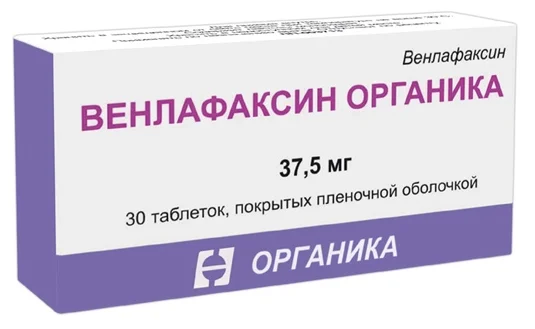
It is a popular antidepressant that comes in two dosages: 75 mg and 150 mg. By its chemical structure, it stands alone, but its therapeutic effect is associated with a powerful inhibition of serotonin reuptake. Extended-release capsules are popular for treating panic disorder. It is prescribed inside, during meals. It must be swallowed whole, and it is very important to take the daily dose once a day, and preferably at the same time.
It is advisable to start treatment for panic disorder with a minimum dosage of 75 mg, once a day. The drug is excellent as a monotherapy, and it is advisable to increase the dose after 2 weeks, but not earlier than 4 days after the start of treatment. Do not take more than 350 mg daily. Velaxin is produced by the Hungarian pharmaceutical company Egis, and the cost of one package of 75 mg of 28 tablets, calculated for a month's course of treatment, will be from 960 to 1560 rubles.
Advantages and disadvantages
Velaxin is contraindicated in conjunction with the use of monoamine oxidase (MAO) inhibitors, but this is a standard contraindication in severely impaired liver and kidney function in children, as well as pregnant and lactating women. Great care is needed in the case of a recent myocardial infarction, the presence of cardiovascular pathology, high blood pressure, glaucoma. Velaxin has side effects, and most often, it is – loss of appetite, dry mouth, increased heart rate, sweating, and ejaculatory disorders in men, anorgasmia. In the case of severe panic disorder, treatment should be continued for at least 6 months. In some cases, the use of Velaxin and analogues can cause psychomotor agitation, inability to sit and stand still, and, most often, this occurs in the first weeks of treatment.
Duloxetine (Simbalta)
Rating: 4.8
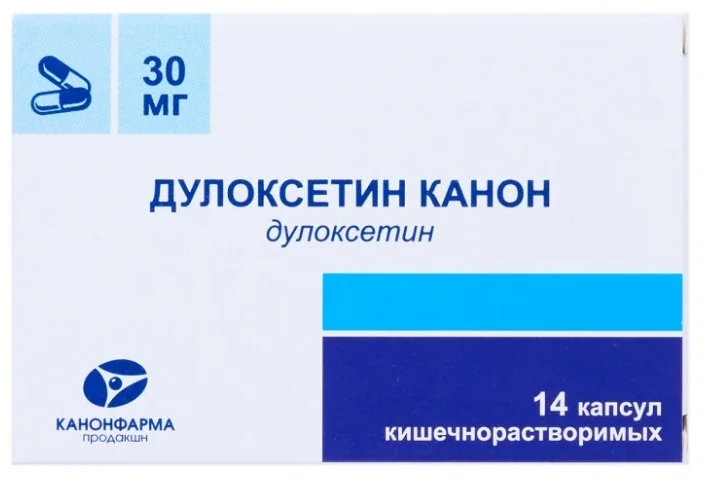
Simbalta is a highly effective drug from the group of not only serotonin reuptake, but also norepinephrine. Its possibilities are wider. It is produced by the European company Eli Lilly, and the drug is not cheap. Its package of 14 tablets of 30 mg will cost from 1,700 to 2,300 rubles at retail. A package of 28 tablets of 60 mg each (that is, in a dose twice as large) will cost from 3,300 to 4,300 rubles. This substance, in addition to suppressing the reuptake of mediators, also suppresses pain, increases the threshold of pain sensitivity. Duloxetine is therefore used for various central pains, such as diabetic polyneuropathy. In the case of severe resistant panic conditions, it is necessary to prescribe 60 mg once a day at the beginning of treatment, and the maximum daily dose is 120 mg per day, in two divided doses.
Advantages and disadvantages
Duloxetine is contraindicated in a fairly small number of conditions, and this is an undoubted plus: it is angle-closure glaucoma. In some cases, it can be used during pregnancy and lactation, and in case of impaired liver and kidney function, it can also be used, but only with caution. Side effects often include dizziness, dry mouth and constipation, palpitations, weight loss and hot flashes. It should be remembered that this drug should be prescribed very carefully, however, like other antidepressants for suicidal tendencies, and it should not be used in conjunction with monoamine oxidase (MAO) inhibitors. It is necessary to limit driving vehicles and potentially hazardous activities during the treatment period, since the patient may develop drowsiness as a side effect. It is also not recommended to use Simbalta and other drugs in conjunction with alcohol, due to the mutual enhancement of the effects.
Fluoxetine (Prozac)
Rating: 4.8
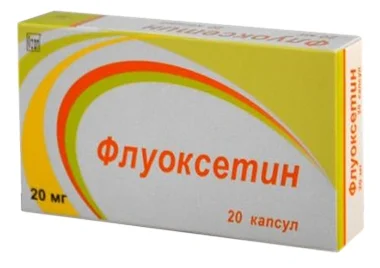
Prozac is the original drug of the same company (Eli Lilly) and is another drug in the same SSRI group called fluoxetine. Prozac is naturally a prescription drug and is the most expensive of all fluoxetines as it is the original drug. One package of 14 20 mg capsules will cost you from 450 to 530 rubles. Fluoxetine produced by Ozone LLC in the same dosage and in the amount of 30 pieces per package will cost from 73 to 120 rubles. If you take a pack of 20 capsules, then it can be found at a price of just 33 rubles, you are unlikely to find cheaper fluoxetine anywhere.
Prozac is a classic antidepressant that does not affect the activity of receptors other than serotonin. After the first dose, the maximum concentration in the blood plasma occurs after 8 hours, and a constant therapeutic concentration of this agent appears 2 weeks after the start of treatment. In addition to panic disorder, the classic indications for use will be various depression, nervous overeating, or bulimia, obsessive-compulsive disorder (OCD), and premenstrual dysphoric syndrome. For the prevention of panic attacks, 20 mg daily, once a day, at the same time is usually enough.
Advantages and disadvantages
Side effects of Prozac are common with other SSRIs. This is dry mouth, decreased appetite and weight loss, constipation and a change in taste is possible. A side effect such as drowsiness is possible, but insomnia is not excluded, a decrease in libido and a lack of orgasm are characteristic, and in men – a violation of ejaculation and erection.
Some patients reported yawning and restless legs syndrome while taking this drug, but these were isolated cases. As with the drugs described above, extreme caution must be exercised if a patient with panic attacks has suicidal tendencies, suicidal thoughts, and so on. After all, a drug can make a person go 'from theory to practice', which increases the risk of suicidal attempts.
It is important that Fluoxetine and Prozac should not be used together with Sonapax, or thioridazine. This drug, as a small antipsychotic, is also used to treat severe panic disorder, and just together with antidepressants, the attending physician should remember this. Prozac and other fluoxetines have a long half-life, and this must be taken into account when combining Prozac with other drugs, as well as when replacing them. Be very careful when combining Fluoxetine with other drugs that affect serotonin, such as triptans for migraines or Tramadol for pain, as this puts you at a higher risk of developing serotonin syndrome.
Sertraline (Zoloft, Asentra, Serenata, Surlift, Stimuloton)
Rating: 4.8
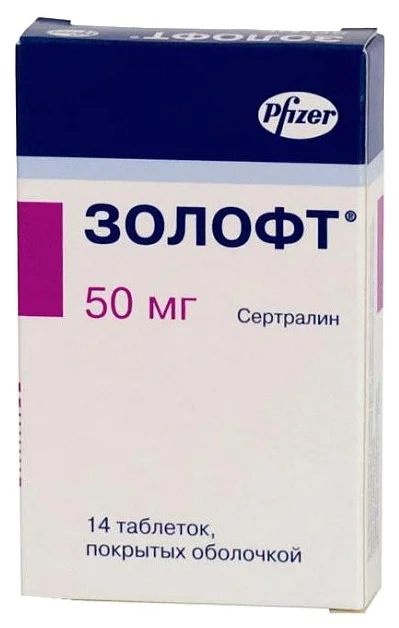
Another drug from this group is Zoloft, or sertraline. It is a potent serotonin reuptake inhibitor, but no stimulant, sedative, or otherwise. It does not increase adrenergic activity, which is very important, since it is sympathoadrenal crises that underlie panic attacks. Zoloft is shown, in addition to panic disorders, also with social phobia, the syndrome of obsessive thoughts and conditions, with depression and with post-traumatic stress disorder. It should be emphasized that panic disorder is present in the official instructions, as an indication, and all previous drugs had depression as the main indication.
The Italian company Hauptpharma Latina produces the drug Zoloft, and 28 tablets of 100 mg will cost from 1100 to 1250 rubles. However, treatment with Zoloft should be started with a dosage of 25 mg per day, that is, half a tablet of 50 mg. This dosage is doubled in a week, up to 50 mg per day. A pack of 28 tablets of 50 mg each will be much cheaper, on average 900 rubles.
Advantages and disadvantages
In extreme cases, this remedy can be used by pregnant women, but breastfeeding mothers should not use this medication. Its side effects are classic for drugs in this group: dry mouth, tachycardia, heart palpitations, involuntary muscle contraction, yawning, night grinding of teeth, decreased potency and ejaculatory disorder in men, anorgasmia. But, fortunately, these effects are dose-dependent and usually do not appear with the low dose indicated for the treatment of panic disorder. Occasionally, a withdrawal syndrome may appear, so it is better to stop the course of treatment, reducing the dose by half, as at the beginning of the course.
Tricyclic: Imipramine (Melipramine)
Rating: 4.8
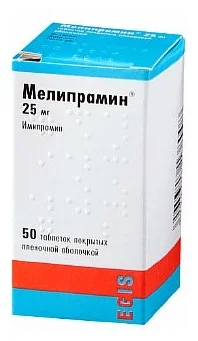
Melipramine is a prominent representative of another group of antidepressants, namely tricyclic antidepressants (TCAs). It was tricyclics that first appeared in clinical practice, and SSRI drugs became known relatively recently. This drug, in addition to reuptake of norepinephrine and serotonin, and facilitating the corresponding transmission of impulse, also blocks histamine and acetylcholine receptors. The result is an anticholinergic and sedative effect. This product is also intended for long-term therapy, and the optimal effect is achieved, on average, after 5 weeks of treatment.
In addition to panic disorder, melipramine is indicated for all depressions, including with anxiety, with atypical depression and with bipolar disorder. This is very convenient, because it is anxiety, anxious expectation that underlies the formation of dependence on a traumatic situation that causes a panic attack.
Melipramine is represented by a small number of different manufacturers, and currently only tablets of Hungarian production by the Egis company are sold in Russia, at a price of 320 to 420 rubles. per packing. The package contains 50 tablets of 25 mg. There are also pills in the same dosage, at an average cost of 300 rubles. for the same packaging. How to use melipramine? In panic disorder, the lowest dose should be prescribed, that is, 25 mg per day.
Advantages and disadvantages
It should be remembered that with panic disorder, a transient increase in anxiety is possible at the very beginning of treatment, and in this case, benzodiazepines, for example Relanium or Seduxen, can be used in order to stop the anxiety. Then, as the effect develops and anxiety decreases, benzodiazepines are canceled. Melipramine should also be withdrawn gradually, and the minimum duration of treatment for panic disorder is, on average, 6 months. You need to take this remedy once after meals before bedtime. Side effects in tricyclics occur quite often, and this is a possible increase in the activity of liver enzymes, sinus tachycardia, tremors, dizziness, blurred vision and impaired accommodation. Due to the anticholinergic effect, constipation and dry mouth, urinary disorders occur, patients complain of increased sweating, sometimes – an increase in body weight. Drugs from the first group, SSRIs, most often reduced body weight due to a decrease in appetite, therefore, the appointment of one or another drug should be taken into account, taking into account the history.
Benzodiazepines
Alprazolam (Zolomax, Helex)
Rating: 4.9
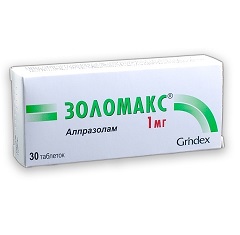
Benzodiazepines are drugs that are widely used both for the maintenance therapy of panic disorder and directly for the relief of the panic attack itself, for example, with the help of intramuscular or intravenous administration of Seduxen or Relanium. They are also used to suppress anxiety, which can increase at first with antidepressant treatment. For example, the combination of tricyclic antidepressants with benzodiazepines is widely known. However, for long-term treatment of panic disorder, it is desirable to use the so-called long-acting benzodiazepines, or high-potency benzodiazepines, and their representative is alprazolam. Short-acting benzodiazepines such as diazepam are not covered here.
Alprazolam is available in 1 mg tablets in a package of 50 pieces. This is a typical anxiolytic, or tranquilizer, which has a sedative, muscle relaxant, anticonvulsant effect in large doses, as well as a hypnotic effect. These effects result in a significant reduction in emotional stress. The patient's anxiety decreases or disappears, anxiety and fear decrease. Since the drug has a concomitant hypnotic effect, and shortens the period of falling asleep, it is very good to prescribe it to people with panic disorder and various insomnia symptoms, with insomnia. This medicine, in addition to panic disorder, is widely used for neuroses, irritability, and somatized depression.
The drug is administered using the minimum effective dosage, and the usual starting dose is 250 to 500 mcg, micrograms. The dosage in micrograms is very rare among the drugs produced in tablets, and this is exactly the case, since the tablets have a very small dosage – 1 mg. Accordingly, 250 micrograms is a 'quarter' of a tablet, and a dose of 500 micrograms is half a tablet. The drug should be canceled gradually, with a decrease in the dose, and the drug should also be used for a long time, according to the doctor's decision. Alprazolam is produced by several companies. At present, the generic INN drug alprazolam is available in Russia, and even then not always, at a price of 940 rubles. for packaging, produced by the domestic company Organic.
Advantages and disadvantages
The advantage of alprazolam is a good decrease in anxiety and improvement of sleep, and the disadvantage is its contraindications, including chronic obstructive airway lesions, and rather severe depression. In addition, it is desirable to use this drug in lower doses, especially if a person first encounters drugs, such as antidepressants or anxiolytics. If it is prescribed for a long time and in high doses, drug dependence may occur, and with a rapid dose reduction or abrupt withdrawal, a severe syndrome may occur, up to insomnia and abdominal cramps. It should be remembered that alprazolam is incompatible with other tranquilizers, and during treatment, alcohol is prohibited, and you also need to refrain from driving vehicles and working with machines and mechanisms.
Non-benzodiazepine anxiolytics
Hydroxyzine (Atarax)
Rating: 4.8
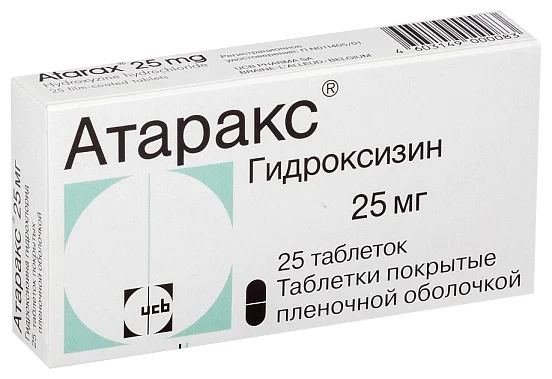
There is also a whole group of anxiolytics that do not belong to the category of benzodiazepines, and its most famous representative is hydroxyzine, which is known under the commercial name Atarax.
What are these drugs used for? They initiate anti-anxiety action, and are the very first in the complex treatment of panic disorder. The fact is that standard antidepressants from the group of selective serotonin reuptake inhibitors, or tricyclic antidepressants, are capable of developing an excellent anti-anxiety effect, but it occurs slowly, as mentioned above, on average, a month and a half after the start of administration. In order to cover the patient in the first weeks after the appointment of antidepressants, Atarax and his 'colleagues' in this group are used to quickly influence anxiety.
Let us consider the effect of non-benzodiazepine anxiolytics using Atarax as an example. Hydroxyzine has a very broad spectrum of action, since it affects choline and histamine receptors. As a result, it induces sedation and antiemetic effects. Atarax is a very quick remedy, after taking the pill, its effect is noticeable after half an hour. In addition, in addition to the anti-anxiety effect, it is able to improve memory and attention, that is, cognitive abilities. Therefore, it is very good in the complex therapy of allergic manifestations, as it helps to stop itching in patients with urticaria and eczema. In individuals with anxiety, it improves sleep quality and lengthens sleep duration. It is necessary to use Atarax in a dose of 25 to 100 mg per day, while the standard dosage is an average of 50 mg per day, which is divided into three doses. That's 12.5 in the morning and lunchtime, and 25 mg in the evening. Therefore, Atarax is produced in this dosage – 25 mg each, and one pack of twenty-five such tablets costs from 230 to 290 rubles, produced by the Belgian company YUSB Pharma.
Advantages and disadvantages
The advantage of Atarax can be considered a low price, the ability to stop itching, improve sleep, but if there is no itching and there is no bad sleep, then it still has an excessive sedative effect and anticholinergic effect, which causes dry mouth and difficulty urinating. It is also very inconvenient that this drug must be taken three times a day, with half a tablet in the morning and at lunchtime, that is, it is necessary to break the pill. However, it should be remembered that the side effects are not very pronounced, and quickly disappear, a few days after the start of treatment, and this is just constipation, urinary retention and dry mouth. For a long time, such side effects persist in the elderly. Atarax is contraindicated during pregnancy, breastfeeding and with hereditary galactose intolerance.
Atypical antipsychotics
Risperidone (Speridan, Rispolept, Risset, Torendo)
Rating: 4.8
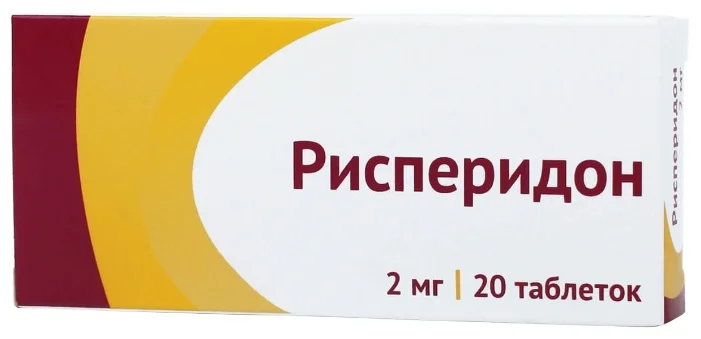
But what if panic attacks have become frequent, panic disorder is severe, and antidepressants taken separately, as well as in combination with anxiolytics, benzodiazepines, or non-benzodiazepine drugs, do not help? Then comes the 'heavy artillery', which refers to antipsychotics, which are also called atypical antipsychotic drugs.
This is risperidone (Rispolept), and its 'colleagues' are olanzapine (Zyprexa, Egolanza), and aripiprazole (Zilaxera, Amdoal, Ariprizol). Antipsychotics are prescribed only by psychiatrists, and the field of activity of antipsychotics is not depression, not anxiety, in their pure understanding in outpatient practice, but real severe mental illnesses. Antipsychotics are needed for real hallucinations, if there is delirium, if there is a manic episode or psychosis. Antipsychotics are needed in the treatment of schizophrenia, in episodes of physical aggression in these patients, and in severe cases of obsessive-compulsive disorder.
But, if combined with antidepressants, then in many studies, atypical antipsychotics have shown quite high effectiveness in the case of severe and resistant panic disorders that could not be cured with a separate drug. So, Risperidone is indicated for all the conditions described above, and chemically it is a blocker not only of serotonergic receptors, but also of dopamine and alpha 1 – adrenergic receptors. As a result, it suppresses the feeling of fear, which dominates the formation of anxiety in panic disorder, and in psychiatric practice reduces aggressiveness and enhances the deep stage of sleep.
The dosage of Risperidone is usually determined by the attending psychiatrist. The starting dose for panic disorder should be less than for schizophrenia or hallucinations. Usually it starts with a dose of 0.25 mg per day, then there is a slight rise. But you should not take the drug in a dose of more than 10 mg per day, under no circumstances. Rimperidone is produced in tablets of 2 mg, in a package of 20 tablets. There is also a dosage of 4 mg. There is a package of 20 mg tablets in the amount of 20 pieces from 120 to 480 rubles, produced by the domestic company Organika. Rispolept manufactured by Janssen cilag, Johnson & johnson can be considered the original drug. And a package of Rispolepta, similar to the previous one, will cost from 300 to 700 rubles.
Advantages and disadvantages
The disadvantage of Risperidone is the rare possibility of developing neuroleptic malignant syndrome, specific side effects inherent in neuroleptics, which depend on the dose. Among them are insomnia, headache, muscle rigidity and hypersalivation, slow motion, constipation, erectile dysfunction and ejaculation, reflex tachycardia, and so on. Antipsychotics treat only severe panic disorder, and also possibly in shorter courses. Antipsychotics are used only by psychiatrists who have experience in treatment with neuroleptics. During the period of treatment, patients should be advised not to overeat, since antipsychotics increase body weight.
Instead of a conclusion
In order not to tire the reader without medical education, at this point we stop listing in detail the drugs that are used all over the world to treat panic disorder in the 'cold stage', between panic attacks. There are still whole classes of medicinal compounds that could be included in the list, but this will significantly increase the volume of the article.
So, so-called minor antipsychotics, such as sulpiride (Eglonil), Teraligen and Sonapax (thioridazine), are successfully used to influence the cognitive component of anxiety and prevent various phobias. Small depressants are used that do not have their own group affiliation. Sometimes their prescription is enough to relieve the patient of a mild panic state, and these include trazodone (or Trittico), Valdoxan and other drugs.
Various anticonvulsants or anticonvulsants are widely used to improve mood in patients with panic disorder. The list of these funds is extremely wide. These are valproic acid and lamotrigine, pregabalin or gabapentin, and such little-used drugs as Trileptal or oxcarbazepine.
It should be said that the recommended duration of treatment for moderate panic disorder is, on average, three to six months. But this time is counted after as soon as the therapeutic effect has come, the patient's mood has improved, and the anxious expectation of the next panic attack has disappeared, and not at all from the first day of taking the medicine. Therefore, it is quite possible to take the drug for more than 6 months, under the control of the necessary tests, taking into account side effects.
But in any case, the rule of the lowest possible dosages remains universal, with a flexible approach, the possibility of replacing the drug and an emphasis on non-pharmacological methods of therapy. Together, this leads to the elimination of panic attacks, a decrease in their number, lengthening of the 'light gaps' between them, increased mood, disappearance of anxiety and an improvement in the quality of life in patients.
The popularity rating is based on the analysis of demand data from the wordstat.yandex.ru service.
Attention! This rating is subjective and does not constitute an advertisement and does not serve as a purchase guide. Before buying, you need to consult with a specialist.


